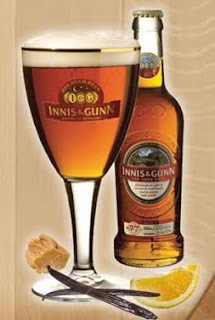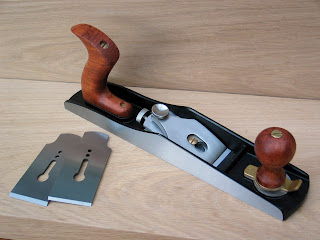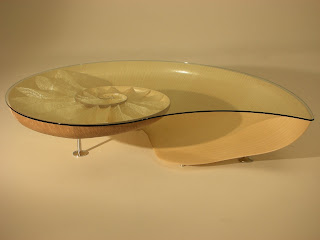
Oh My God! If you haven't tried this stuff you need to - it is absolutely delicious! Our postman is quite into his beers and we occasionally swap tasting notes and bring each other a bottle or two to try if we find something a bit special or unusual. I read a fascinating article about the guy who set up Innis and Gunn in an in flight magazine on the way to a woodworking exhibition in Hannover last month so I have been keen to try his brew ever since.
I've also recently been experimenting by barbecuing chicken long and slow on the gas grill with the lid closed and a big pile of oak shavings smoking away on the other side. Incidentally barbecue is a noun - not a verb, you don't barbecue food, you gently smoke it until it becomes 'barbecue'! (an interesting factoid to drop into the conversation next time your neighbour offers you an incinerated sausage with a raw middle). The best result so far has been to marinade the chicken in 1 part Japanese Mirin and 1 part Worcester sauce with a pinch of salt and a generous twist of white pepper.
The result is golden and succulent and utterly delicious with strong vanilla and toffee flavours. You can taste exactly the same oak imparted flavours in Innis and Gunn's original oak aged beer.
The concept originated when they were beer seasoning casks for distillers, the beer itself was supposed to be thrown away but the brewery workers were quietly siphoning it off for themselves. The boss's lad was working on the shop floor at the time (he had no intention of getting into brewing himself) but was so impressed that he ended up taking over the firm, abandoning everything else they were doing and focussing the entire business on what had previously been a waste product!
Net result - one of Scotland's most successful export beers ever! And I can see why. Hmmmm, maybe the postie can wait until I've been shopping again....!!!












